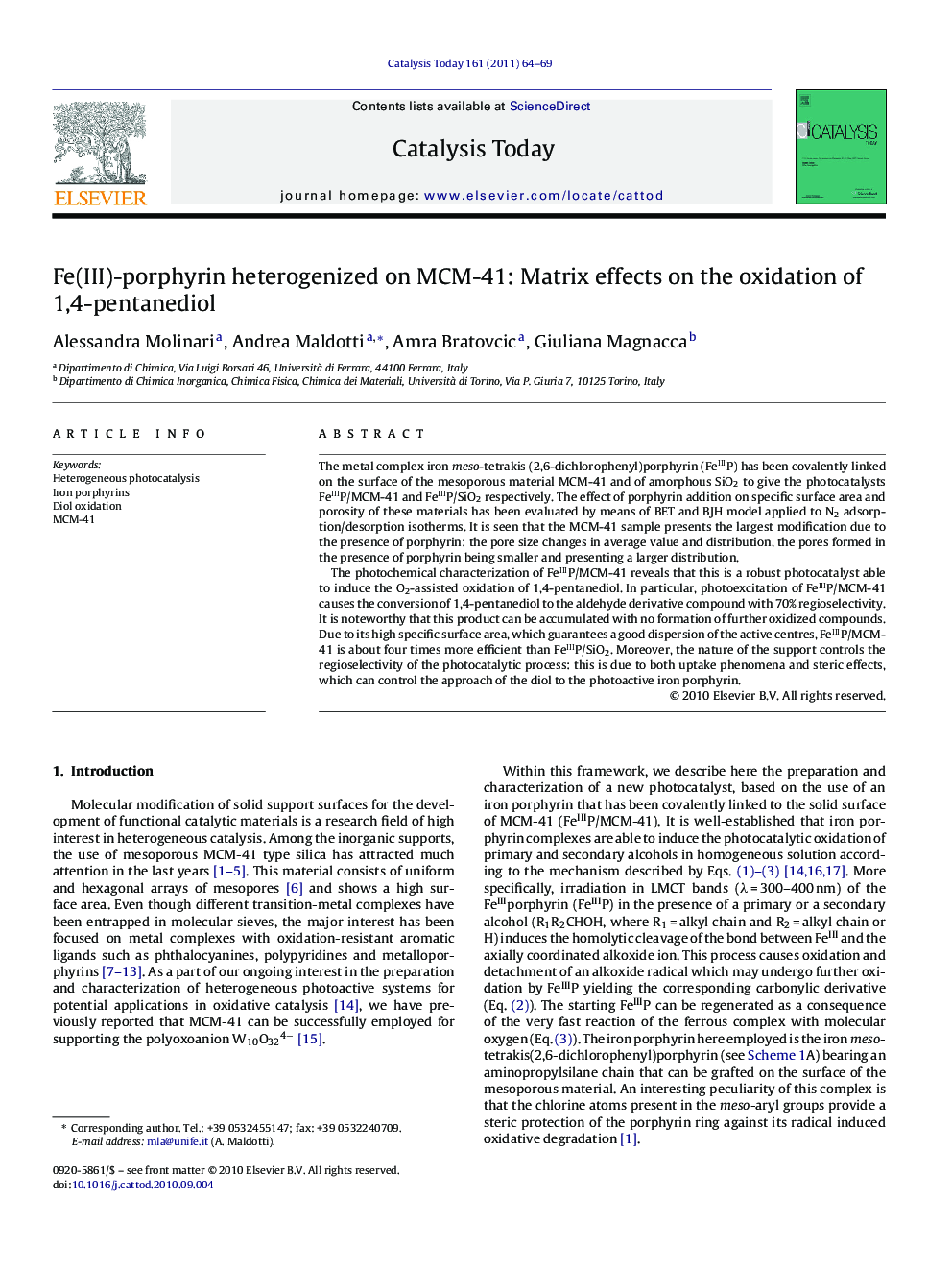| Article ID | Journal | Published Year | Pages | File Type |
|---|---|---|---|---|
| 56474 | Catalysis Today | 2011 | 6 Pages |
The metal complex iron meso-tetrakis (2,6-dichlorophenyl)porphyrin (FeIIIP) has been covalently linked on the surface of the mesoporous material MCM-41 and of amorphous SiO2 to give the photocatalysts FeIIIP/MCM-41 and FeIIIP/SiO2 respectively. The effect of porphyrin addition on specific surface area and porosity of these materials has been evaluated by means of BET and BJH model applied to N2 adsorption/desorption isotherms. It is seen that the MCM-41 sample presents the largest modification due to the presence of porphyrin: the pore size changes in average value and distribution, the pores formed in the presence of porphyrin being smaller and presenting a larger distribution.The photochemical characterization of FeIIIP/MCM-41 reveals that this is a robust photocatalyst able to induce the O2-assisted oxidation of 1,4-pentanediol. In particular, photoexcitation of FeIIIP/MCM-41 causes the conversion of 1,4-pentanediol to the aldehyde derivative compound with 70% regioselectivity. It is noteworthy that this product can be accumulated with no formation of further oxidized compounds. Due to its high specific surface area, which guarantees a good dispersion of the active centres, FeIIIP/MCM-41 is about four times more efficient than FeIIIP/SiO2. Moreover, the nature of the support controls the regioselectivity of the photocatalytic process: this is due to both uptake phenomena and steric effects, which can control the approach of the diol to the photoactive iron porphyrin.
